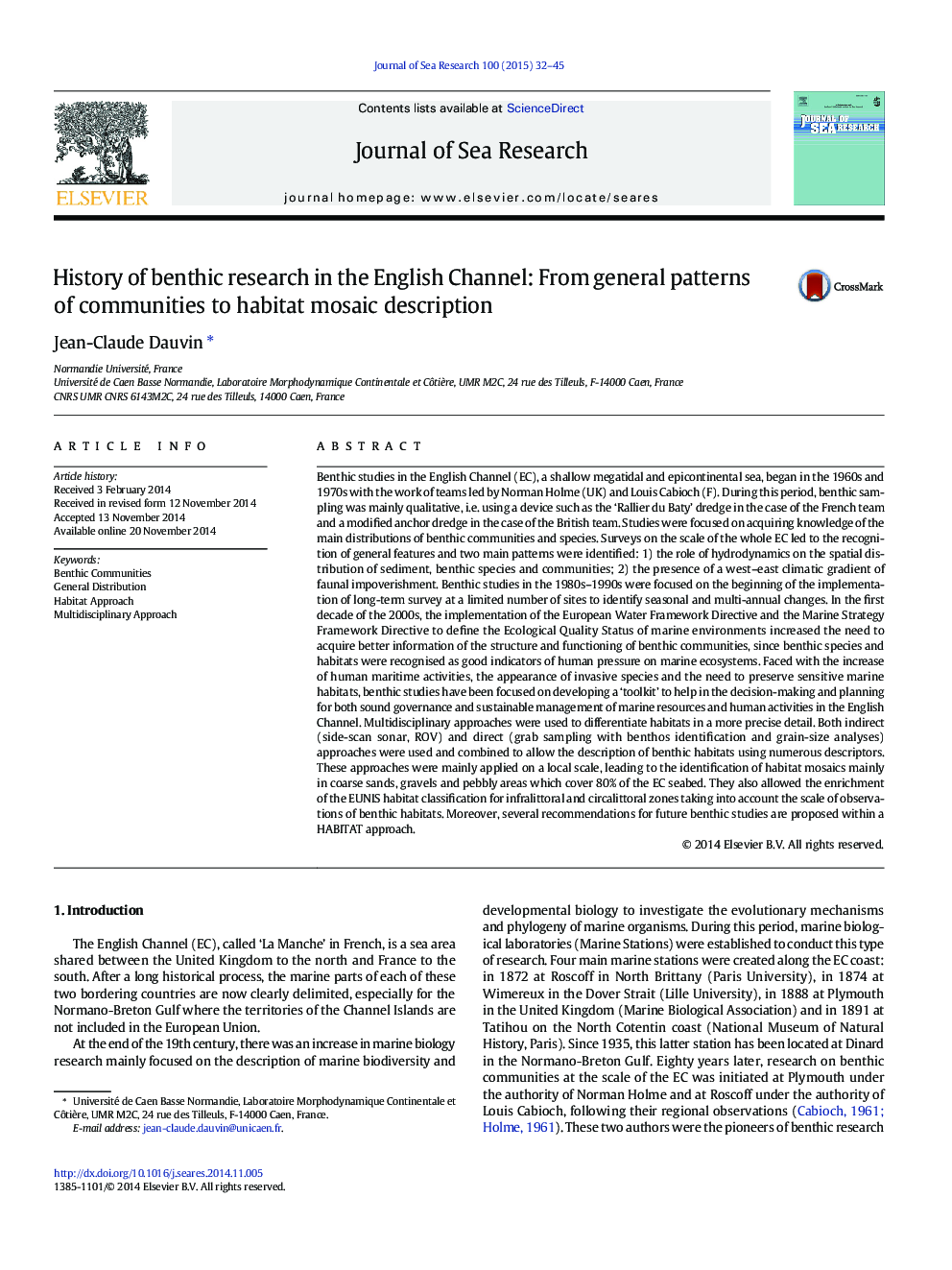| کد مقاله | کد نشریه | سال انتشار | مقاله انگلیسی | نسخه تمام متن |
|---|---|---|---|---|
| 4549608 | 1627474 | 2015 | 14 صفحه PDF | دانلود رایگان |
• This is a review on knowledge of benthic habitats in the English Channel.
• The first studies provided map of the benthic communities for the whole EC.
• In the year 2000, there is a new era of multidisciplinary research on benthic habitats.
• Recommendations for future benthic studies were proposed within a HABITAT approach.
Benthic studies in the English Channel (EC), a shallow megatidal and epicontinental sea, began in the 1960s and 1970s with the work of teams led by Norman Holme (UK) and Louis Cabioch (F). During this period, benthic sampling was mainly qualitative, i.e. using a device such as the ‘Rallier du Baty’ dredge in the case of the French team and a modified anchor dredge in the case of the British team. Studies were focused on acquiring knowledge of the main distributions of benthic communities and species. Surveys on the scale of the whole EC led to the recognition of general features and two main patterns were identified: 1) the role of hydrodynamics on the spatial distribution of sediment, benthic species and communities; 2) the presence of a west–east climatic gradient of faunal impoverishment. Benthic studies in the 1980s–1990s were focused on the beginning of the implementation of long-term survey at a limited number of sites to identify seasonal and multi-annual changes. In the first decade of the 2000s, the implementation of the European Water Framework Directive and the Marine Strategy Framework Directive to define the Ecological Quality Status of marine environments increased the need to acquire better information of the structure and functioning of benthic communities, since benthic species and habitats were recognised as good indicators of human pressure on marine ecosystems. Faced with the increase of human maritime activities, the appearance of invasive species and the need to preserve sensitive marine habitats, benthic studies have been focused on developing a ‘toolkit’ to help in the decision-making and planning for both sound governance and sustainable management of marine resources and human activities in the English Channel. Multidisciplinary approaches were used to differentiate habitats in a more precise detail. Both indirect (side-scan sonar, ROV) and direct (grab sampling with benthos identification and grain-size analyses) approaches were used and combined to allow the description of benthic habitats using numerous descriptors. These approaches were mainly applied on a local scale, leading to the identification of habitat mosaics mainly in coarse sands, gravels and pebbly areas which cover 80% of the EC seabed. They also allowed the enrichment of the EUNIS habitat classification for infralittoral and circalittoral zones taking into account the scale of observations of benthic habitats. Moreover, several recommendations for future benthic studies are proposed within a HABITAT approach.
Journal: Journal of Sea Research - Volume 100, June 2015, Pages 32–45
